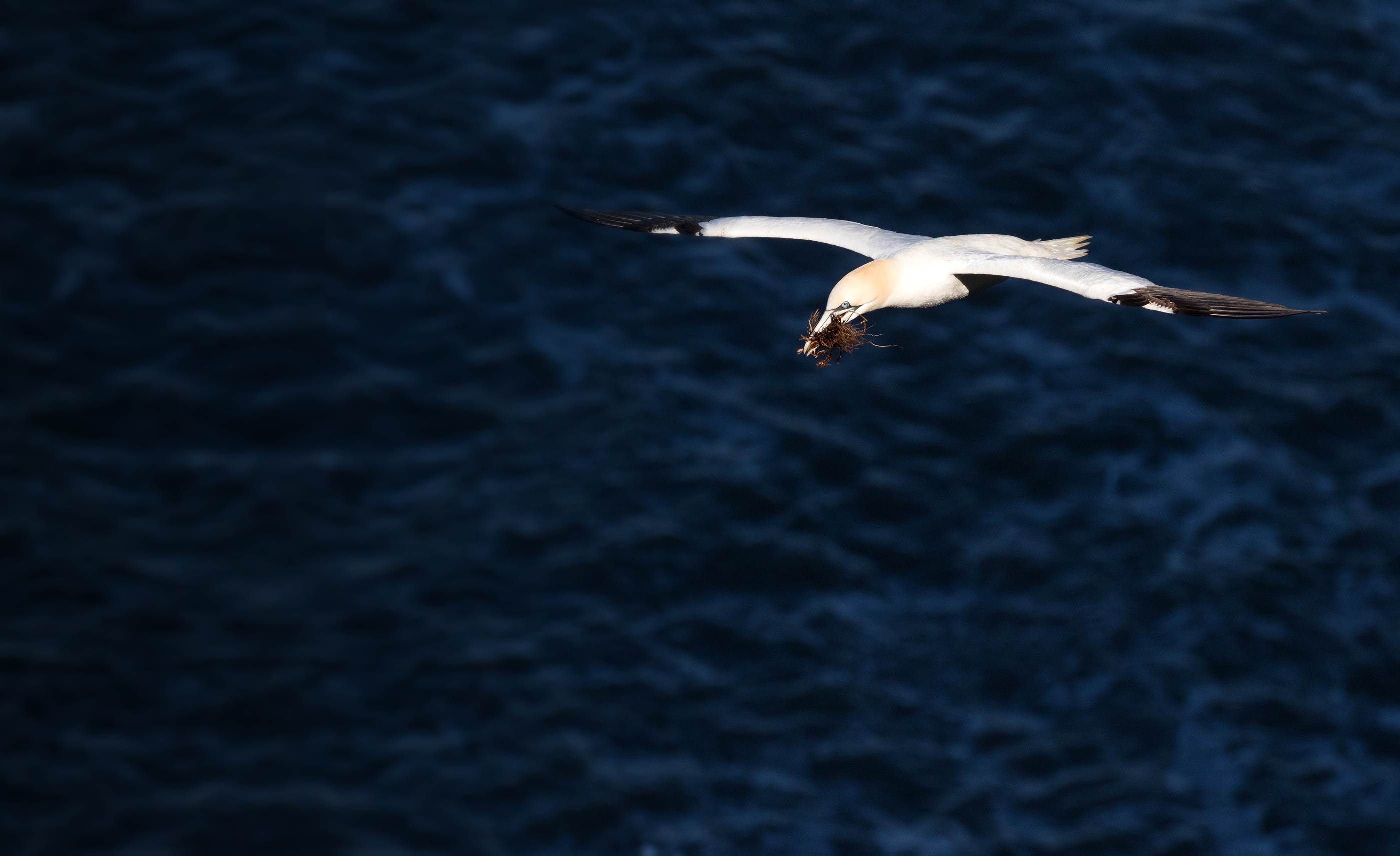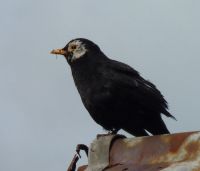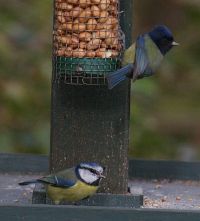Species affected and abnormality types
To date, 58 species have been recorded through the Abnormal Plumage Survey. If we bear in mind that only garden habitats are being considered, this total is particularly impressive. The birds that have been spotted range from the very small – such as Goldcrest and Wren – to the very large – including Buzzard and Herring Gull – and the variety of abnormality types is also substantial.
Despite this diversity, a few species and abnormality types have been logged disproportionately often. Of the near 3000 records submitted so far, 82% have been classed as being ‘leucistic’; compared with just 3% as ‘albinistic’; 4% as ‘melanistic’; and 11% as ‘other’. Read more about plumage abnormality types.
Of all the species recorded, abnormal Blackbirds have been seen most frequently, accounting for over 40% of records. Most of these birds have sported odd white feathers or have been completely white. House Sparrows, with 281 records submitted to date, are the next most frequently seen species through the Abnormal Plumage Survey, with Jackdaw (171) and Carrion Crow (157) next on the list.
There is a bias to consider in our sample, however, given that some species are much more frequent garden visitors than others. To try and account for this, we can incorporate data from our year-round Garden BirdWatch survey. By dividing the number of records of abnormal-looking birds by the average weekly count for each species, the latter as documented through Garden BirdWatch, a ‘plumage abnormality rate (PAR)’ can be derived (see table below).
|
Species |
Number of records |
Average weekly count per garden |
Plumage abnormality rate (PAR) |
|
Blackbird |
1249 |
2.60 |
480.38 |
| House Sparrow | 281 | 4.82 | 58.30 |
| Jackdaw | 171 | 1.15 | 148.70 |
|
Carrion Crow |
157 |
0.43 |
365.17 |
| Chaffinch | 119 | 2.80 | 42.50 |
| Starling | 95 | 3.56 | 26.69 |
|
Robin |
82 |
1.22 |
67.21 |
| Great Tit | 62 | 1.76 | 35.23 |
| Blue Tit | 61 | 2.74 | 22.26 |
| Goldfinch | 58 | 2.58 | 22.48 |
|
Greenfinch |
46 |
1.77 |
25.99 |
|
Dunnock |
46 |
1.40 |
32.86 |
| Collared Dove | 42 | 1.64 | 25.61 |
| Magpie | 34 | 0.98 | 34.69 |
|
Pheasant |
31 |
0.26 |
119.23 |
| Rook | 28 | 0.30 | 93.33 |
| Great Spotted Woodpecker | 21 | 0.34 | 61.76 |
|
Woodpigeon |
20 |
2.21 |
9.05 |
| Bullfinch | 14 | 0.28 | 50.00 |
| Coal Tit | 13 | 0.7 | 18.57 |
| Siskin | 12 | 0.37 | 32.43 |
Species for which 10 or more records of birds with abnormal plumage have been collected. ‘Average weekly count per garden’ is derived from BTO Garden BirdWatch from 2010–14. ‘Plumage abnormality rate (PAR)’ is calculated from ‘number of records’ divided by the ‘average weekly count per garden’.
Despite being common garden visitors, the PAR of Blackbirds still exceeds that of other species. However, several other birds – those that are less numerous in gardens but have been logged quite often through the Abnormal Plumage Survey – shoot up the table. Carrion Crows, Jackdaws, Pheasants and Rooks are notable examples, while House Sparrows, which are relatively abundant in gardens, drop down the list.
The four species with the highest PARs – Blackbirds, Carrion Crows, Jackdaws and Rooks – have one particularly obvious shared characteristic: their normal plumage is a largely uniform, dark colour. Given that the most frequent plumage abnormality type recorded through the survey has been ‘leucism’, whereby unusual white feathers appear, few species could display this abnormality more clearly. However, at this stage, we cannot exclude the possibility that these species might somehow be more susceptible to plumage pigmentation loss.
It’s not just strange white feathers that have been documented through the Abnormal Plumage Survey. Of the 112 records of ‘melanistic’ birds – whereby unusual dark pigmentation patterns have been seen – about 40% have been of Great Tits (30) and Blue Tits (16), with 18 other species also logged. In the case of Great and Blue Tits, it is often the case that the white cheeks or yellow bellies appear as a much darker colour.
Other fascinating abnormalities have included a Chaffinch with a green crown in West Sussex, a Siskin with ‘slate-grey’ wings and body in Worcestershire and a ‘primrose yellow’ Blue Tit in North Wales. On a handful of occasions, individual birds have looked so unusual that participants have had to resign themselves to writing ‘species unknown’.
Take part in our Abnormal Plumage Survey








Share this page